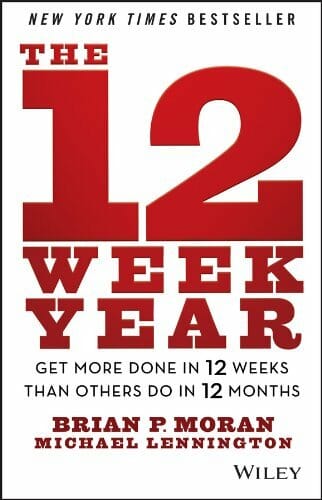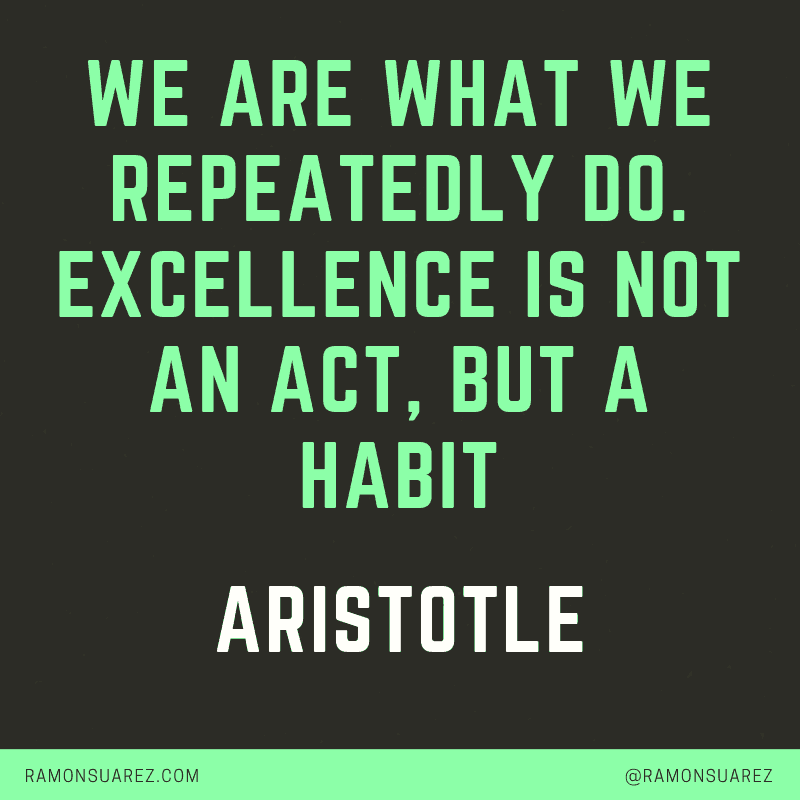The first of my book summary and review series has to be the book that has helped me to finally write down my vision and start a plan to move towards the future I want: The 12 Week Year: Get More Done in 12 Weeks than Others Do in 12 Months by Brian P. Moran and Michael Lennington.
 Summary
Summary
The basic premise of the book is that yearly deadlines are way too long and that we tend to slack until the last minute, wasting too much time and having no time to maneuver left. Every moment is important, and shorter deadlines help make things happen, keep you motivated and build momentum (sounds like my entrepreneurship challenge, doesn’t it?).
12 weeks is your new year. This helps beat lack of execution. Since you can’t afford to waste weeks, every day is important. Every block of 12 weeks is a new start, an opportunity to improve. At the end you reflect on what you have achieved (and appreciate it), celebrate, and take a break.
Breaking up the year in quarter chunks (12 weeks plus some rest time) is a bit like periodization in sports: you focus on one skill for a while and then move on to the next to maximize your capacity in each of your skills.
To achieve your long term objectives you have to concentrate on the critical few activities that generate success and fulfillment. You have to have a strong emotional stake in the outcome. So the first thing you should do is to write down a compelling vision of the future that you want (you have to be emotionally connected to your vision). Then you align your short term goals and plans with it.
Working from your plan helps reduce mistakes, save time and improve focus. Structure helps make things more predictable.
From your vision you work out the goals for the next 12 weeks and the tactics necessary to implement them (you can see mine here). From here you take it one week at a time and keep on track with your daily activities (it helps me to have a productivity planner, where I write a list of tasks to do for the week and day and the pomodoros I will spend on each). It takes time to develop a vision you are emotionally connected to keep working on it regularly.
Your goals should be specific and measurable, stated positively, be a realistic stretch, assign accountability, and be time bound.
To make sure you don’t deviate too much, you keep score with percentages of what you have achieved. You only focus on outcomes, not effort or intentions. You should have lead and lag indicators that are complementary. The best lead indicator is a measure of your execution. You don’t measure results.
Based on your execution reviews you fix the flaws in your plan and execution. This helps you overcome productive tension (that awful feeling we get then we know we are not doing what we should be doing). You don’t need to hit 100 to reach your goals. 85% is fine. With 65 to 70% you are still in the game.
Time is your most valuable asset. Spend it on what matters. Be intentional.
There are three blocks to structure your performance time:
- Strategic blocks: three hours of uninterrupted time scheduled into each week. Give your all to pre planned task, to your strategic and money making activities. It is better to schedule them in the beginning of the week in case you need to reschedule.
- Buffer blocks: used to deal with all the unplanned and low value activities (it is good to group them together).
- Breakout blocks: at least three hours doing something other than work during normal business hours. This helps keeping your creative edge sharp.
The more you can create routine in your days, the easier and more productive they will become. Think about when you tend to be at your best and plan the most important activities then.
You can’t do it all: prioritize your most important activities and do them first.
You control your thinking, your actions, and your response. You are accountable to yourself. To keep successful commitments you need: a strong desire, keystone actions, to count the costs of the commitments, and act on your commitment not on how you are feeling.
Results are a confirmation of your greatness, not a measure of it. You are great long before you get results. You become great the moment you decide to do what you have to do to be great.
To help with process control you can create weekly accountability meetings to confront breakdowns, recognize progress, create focus, and encourage action (a bit like mastermind and accountability groups). In them you report on your progress, what is working well, get help from the group and encourage each other.
This is how you turn your dreams into a reality.
Other highlights
 > “We are what we repeatedly do. Excellence then is not an act, but a habit.”
> “We are what we repeatedly do. Excellence then is not an act, but a habit.”
Aristotle
- Knowledge is only powerful if you act on it.
- No rewards to ideas that are not implemented.
- Execution makes all the difference.
- Your results are the byproduct of your actions. Your actions are based on your thinking. Results are driven by your thinking. Your experience in life is created by your thinking.
- When you change your thinking everything changes.
- Value what is important to you over your own comfort.
- You need a vision of the future that is bigger than your present.
- A compelling vision creates passion.
- Your business objectives are the means not the end.
- Accountability is ownership, not consequences.
- Keep it simple.
- Plans have to be written down, not kept in your brain.
- Focus on making progress.
- Add your model week to your calendar.
- Don’t feel sorry for yourself, take action to never be a victim again.
- If you want something you don’t have you need to do something you are not doing.
- Taking action encourages you.
- Nurture relationships with accountable people.
- Be an accountability role model.
- Learn from life and from your mistakes.
- Focus on the future.
“An ounce of action is worth a ton of theory.”
Ralph Waldo Emerson
Review
I really enjoyed The 12 Week Year. It may be because it came at the right moment in my life but even without this it is a great book. It is well written and full of actionable information and it has helped me to finally write down a vision that feels true and to take another step into planning and structuring my work.
 There is also an accompanying 12 Week Year Field Guide that I have not read (at least yet). If you have worked with it, I’m definitely interested in knowing what you think of it. I really like the idea of making it easier to implement what you learn in books. Field guides, handbooks and the sort are great tools.
There is also an accompanying 12 Week Year Field Guide that I have not read (at least yet). If you have worked with it, I’m definitely interested in knowing what you think of it. I really like the idea of making it easier to implement what you learn in books. Field guides, handbooks and the sort are great tools.
 What I found really useful was subscribing to their free getting started course. The first 3 lessons come with 3 PDF files that make it much easier to put everything down. I used them to write my own vision after finishing the book. The emails you receive are one of the best examples of email marketing I’ve seen. They are very helpful, insightful and to the point. Even if you don’t read the book it is worth it to sign up for their course.
What I found really useful was subscribing to their free getting started course. The first 3 lessons come with 3 PDF files that make it much easier to put everything down. I used them to write my own vision after finishing the book. The emails you receive are one of the best examples of email marketing I’ve seen. They are very helpful, insightful and to the point. Even if you don’t read the book it is worth it to sign up for their course.
If you are curious about the books I’m reading, check out my Goodreads profile. There are already over a thousand books there.
To receive the next summaries in your mailbox subscribe below.
Connect on Twitter, Facebook, Linkedin, Instagram, Pinterest, and YouTube.